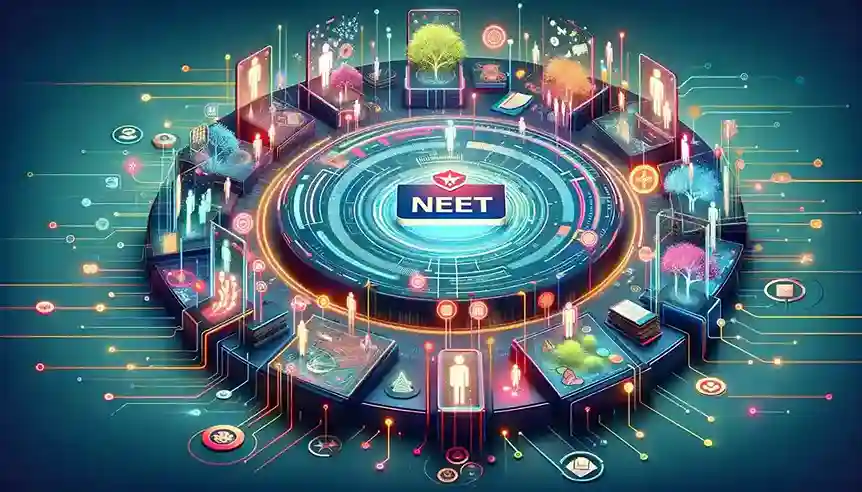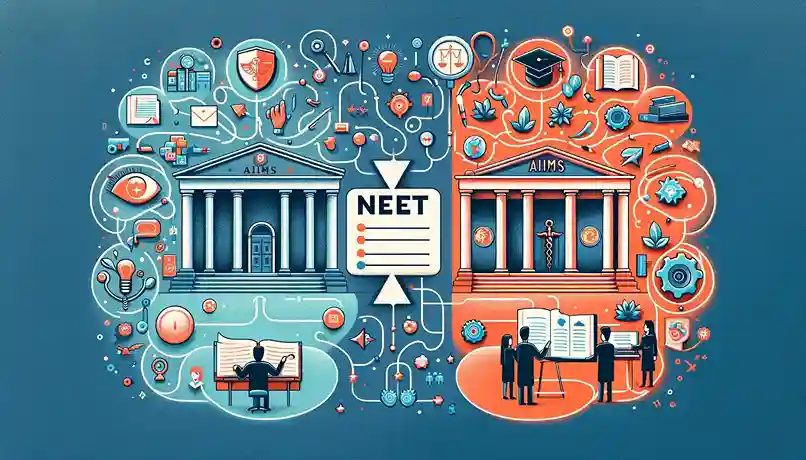Why was the NEET Exam Introduced?
Hey there, NEET aspirant! Prepared to explore the world of medical entrance exams? It may seem like a lot of information at once, but don’t worry! Let’s go back in time and talk about how the National Eligibility cum Entrance Examination (NEET) came to be, what caused it to be made, and what other options you have to get that coveted medical seat.

| Exam Name | National Eligibility Cum Entrance Test (NEET) |
| Conducting Body | National Testing Agency (NTA) |
| Exam Level | Undergraduate (UG) Exam at the National Level |
| Exam Mode | Offline or Paper pen/ OMR Based Test |
| Exam Frequency | Once a year |
| Total Registrations | 20,87,000 (NEET 2023) |
| Courses Offered Through NEET UG | MBBS, BDS, BSc Nursing, BAMS, BVSC & AH |
| Exam Fees | INR 1,700 (General), 1,600 (OBC), 1,000 (Reserved category candidates), 9,500 (Foreign nationals) |
| Exam Duration | 3 hours and 20 minutes |
| Expected Date | 5th May, 2024 |
| Timing | 2 PM to 5.20 PM (IST) |
| Number of Subjects and Total Marks | Physics (180 marks), Chemistry (180 marks), Biology (360 marks): Total Marks – 720 |
| Total Questions | 200 out of which 180 have to be answered |
| Marking Scheme | +4 for each correct answer -1 for each incorrect answer |
| Number of Exam Cities | 554 (India) No exam centres abroad this year. |
| Language/Medium of Paper | 13 Languages – English, Hindi, Bengali, Urdu, Assamese, Gujarati, Marathi, Odia, Kannada, Tamil, Malayalam, Punjabi and Telugu |
| Total Number of Seats | MBBS – 1,08,890 BDS – 27,868 BAMS – 52,720 BVSc & AH – 603 |
| NEET Helpline Numbers | 011-40759000 |
| NEET Official Website | www.neet.nta.nic.in |
A Trip Down Memory Lane: The Confusing Maze of Traditional Exams

Back in the day, medical entrance exams resembled a crazy jigsaw puzzle. Every state and college had its own scene, with own regulations, exams, and atmospheres. It felt like you needed a manual to remember which exam was next.
There were some exams that made you think and others that were just for mugging up stuff. As students, it felt like we were on an endless roller coaster, making us feel confused and lost.
Meet the Star: The AIIMS Exam

There are some special colleges called the All India Institute of Medical Sciences (AIIMS). They are the epitome of medical colleges, and they had their very own entrance exam.
AIIMS entrance exam wasn’t your typical exam – it was known for being challenging but also for testing how we think and reason. It wasn’t just about knowing facts; they wanted to see if we could think critically and logically.
AIIMS was all about producing doctors who could handle complex situations and solve problems with their minds.
The Complexity of Too Many Exams: A Confusing Journey
Imagine studying for eight to nine tests, each with its format, level of difficulty, and rules. It was like trying to juggle a million balls at once! Some people had it easy because they had different tests, while others had to work hard.
Apart from the problem of handling so many entrance exams, there was another problem- handling all these competitive exams with school boards. It was even more difficult if you were from the ICSE board or state board as most of the exams used to follow the CBSE syllabus.
So essentially, the timeline was- Take your board exams, take your NEET/ AIPMT test, then study for the AIIMS And JIPMER entrance exams, and lastly, the medical entrance exams of different states.
Enter the Hero: The Birth of NEET

In 2016, NEET became our savior. What was different?
One entrance test for every medical college across India. NEET made sure both mugging up information and applying concepts mattered. This way, future docs weren’t just nerds but also decision-makers.
Why Did We Need the NEET Exam?

- Fair Play: NEET aimed to level the playing field. No matter where you came from, you had an equal shot at becoming a doctor.
- Ensuring Quality: NEET was all about making sure that every doctor possessed the same foundational skills, no matter which college they attended.
- Less Stress: With NEET, students could focus on truly learning the material instead of racing through multiple exams.
- No More Bad practices: Since NEET was one centralized test, there was less room for tricky business and unfair practices.
A Different Path: The AIIMS Experience

Allow us to talk about AIIMS once more. They had their own test that was a little different from the others. AIIMS cared about more than just what we knew. They also cared about how we think.
Their test was hard because it covered a lot of topics, from science to general information, and asked us to think critically and figure out solutions. But even the well-known AIIMS schools saw how useful NEET was.
AIIMS exam and NEET Exam co-existed until the AIIMS exam was abolished in the session 2019-2020 and admission to all the AIIMS Colleges started taking place through NEET scores and rank. This is still the case.
The Big Picture: NEET and Beyond

Fast forward to today: NEET is the primary gateway to medical education in India.- AIIMS, State Colleges, private colleges, and Foreign Medical Colleges.
Whether you want to pursue MBBS, BDS, Veterinary, Nursing, Ayurveda, or Homeopathy courses, NEET is the only exam you have to sit for now. It’s like the end-all-be-all of entrance exams, setting the stage for a standardized and fair assessment process.
Final Thoughts: A Journey of Transformation
From old tests that were hard to understand to NEET, which is simple and easy to understand, the journey has been nothing short of transformative. It’s not enough to just pass a test; you need to learn a lot to become a doctor who can help people. (Read: Will your NEET score matter in the future?)
And now you have a one-stop resource for all your queries about the medical world.
It’s easier for you to know where to go if you have any questions about NEET. Don’t you? 😉
Remember that the end goal is to learn, grow, and one day be proud to wear that white coat as a doctor. Even though the road may look hard, you’ll be able to handle it with ease and success if you have the right attitude and are determined.






